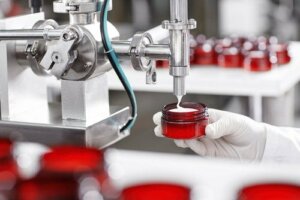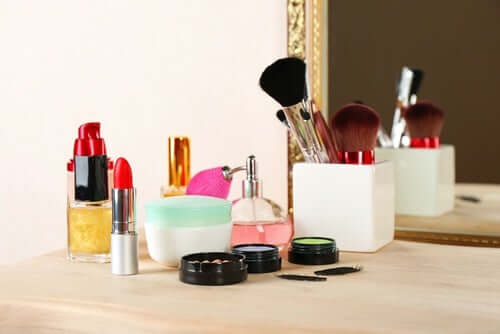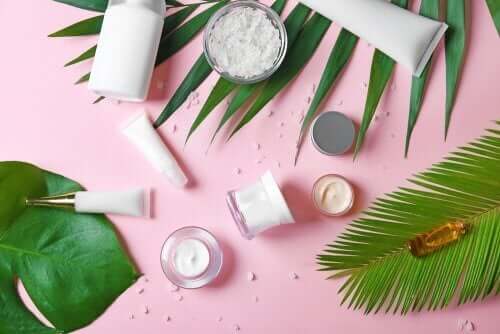How to Identify Quality Cosmetics

It’s important to have some basic notions that’ll help you select quality cosmetics, not only to take care of your health but also to be more sensitive to the environment.
People’s habits vary but most of us come into daily contact with the various ingredients in cosmetics. These are either natural or highly processed chemical substances and their proportions depend on the type of product you use.
What exactly is a cosmetic?

A cosmetic is a substance or mixture intended for the superficial parts of the body, either for hygiene or for adornment purposes, especially in the face.
Yes, cosmetics are part of our daily lives even though many think they’re limited to facial care, perfumes, and make-up products. This isn’t so and many other products we use daily are also cosmetics such as:
- Soaps and deodorants
- External intimate hygiene products
- Perfumes and eau de cologne
- Oral and dental care products
- Bath and shower gels
- All products related to the care of nails and lips
- Hair removal products
- Products related to hair hygiene, color, and styling
- Sunscreens and sunless tanning products
Labeling of quality cosmetics
As for the labeling of a cosmetic product, the containers and packaging must include:
- The name of the product
- The name of the company and manufacturer’s address
- Also, the weight or volume
- And the Expiration date
- The manufacturing lot number
- The country of origin
- Instructions and contraindications
- The function of the product
Discover: What Is Colloidal Oatmeal and What Are Its Benefits?
The INCI of quality cosmetics
INCI stands for International Nomenclature of Cosmetic Ingredients and is used internationally for naming the ingredients in a given cosmetic. Also, the list of ingredients must be included in an INCI on the label of all cosmetics. Also, they must be in order according to their importance and proportion in the formula.
According to this, the first components in the list are those found in larger quantities. Similarly, the last ones are present in smaller quantities. Therefore, a quality cosmetic advertised as containing a special ingredient must list it at the very top.
How to identify plant-based ingredients

Likewise, plant-based ingredients must be at the top of the list. To identify them, you should know they use the Latin name of the plant followed by:
- Aqua, water or distillate (for hydrolats and floral infusions)
- Extract
- Oil
- Butter
- Wax
Also, the term parfum can refer to any substance added to the cosmetic for scenting purposes. It may include from a natural essential oil to ingredients suspected of being carcinogenic, such as toluene or phthalates within this denomination. In quality cosmetics, it usually refers to essential oils.
Tips for preserving quality cosmetics
Besides looking at the PAO (period-after-opening) indicator you must follow some recommendations so that its properties remain unchanged after you open a cosmetic product.
The PAO can vary depending on the following:
- Type of packaging
- Whether or not it has preservatives
- Type of cosmetic formula
- Whether it’s a sensitive skin product
- The area of the body where the product is to be applied
You must store quality cosmetics in a cool, dry place away from light. Also, wash your hands before and after each use when handling them with your fingers. Then, close the container tightly after every use.
Also, you should renew sunscreen lotions every year. This is because the filters in their formula have expiration dates and may have lost effectiveness. Most importantly, toss any cosmetic that may have lost its original smell, color, or texture, and doesn’t smell good.
As you can see, you must follow the recommendations in the label to avoid unwanted side effects (irritation or allergies). Also, discard it after its expiration date.
You may also be interested in: How to Make Lye-Free Aloe Vera Soap
Conclusion
You must look at the labels to identify quality cosmetics. This way, you can check their composition to find out if the ingredients are in the right proportions. Also, don’t forget it must be suitable for your skin type, besides knowing what it’s indicated for.
All cited sources were thoroughly reviewed by our team to ensure their quality, reliability, currency, and validity. The bibliography of this article was considered reliable and of academic or scientific accuracy.
-
Chorilli, M., Scarpa, M. V., Leonardi, G. R., & Franco, Y. O. (2007). Toxicologia dos cosméticos. Latin American Journal of Pharmacy.
-
Mejía, C., & Corporación Biointropic, Z. (2018). Análisis Sector Cosmético Y Aseo. Estudios Sobre La Bioeconomía Como Fuente de Nuevas Industrias Basadas En El Capital Natural de Colombia.
-
Chorilli, M., Tamascia, P., Rossim, C., & Salgado, H. R. N. (2009). Ensaios biológicos para avaliação de segurança de produtos cosméticos. Revista de Ciencias Farmaceuticas Basica e Aplicada.
This text is provided for informational purposes only and does not replace consultation with a professional. If in doubt, consult your specialist.








